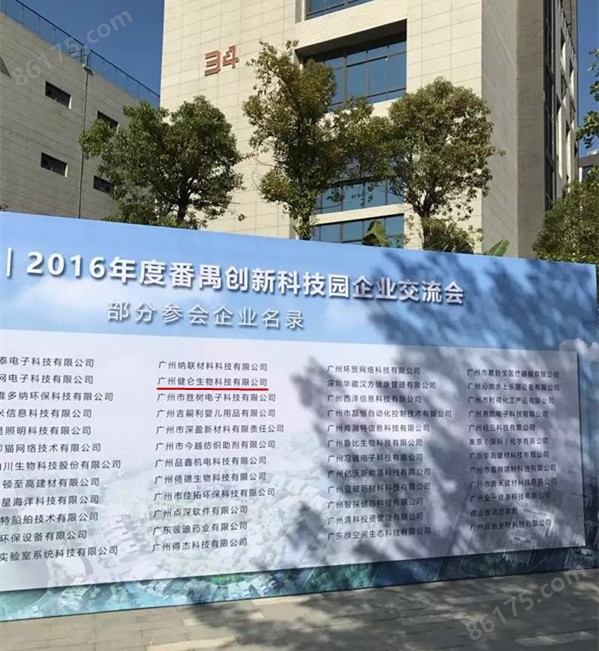其他品牌 品牌
代理商厂商性质
广州市所在地
沙眼衣原体IgG酶联免疫诊断试剂盒
广州健仑生物科技有限公司
广州健仑生物科技有限公司长期供应可替宁检测试剂盒,其牌子是美国NOVABIOS,国产创仑
诊断血清套装,其主要品牌有丹麦SSI、德国SIFIN
沙眼衣原体IgG酶联免疫诊断试剂盒
我司还提供其它进口或国产试剂盒:登革热、疟疾、流感、A链球菌、合胞病毒、腮病毒、乙脑、寨卡、黄热病、基孔肯雅热、克锥虫病、违禁品滥用、肺炎球菌、军团菌、化妆品检测、食品安全检测等试剂盒以及日本生研细菌分型诊断血清、德国SiFin诊断血清、丹麦SSI诊断血清等产品。
欢迎咨询
欢迎咨询2042552662
广州健仑生物科技有限公司与cellabs达成代理协议,欢迎广大用户咨询订购。
二维码扫一扫
【公司名称】 广州健仑生物科技有限公司
【】 杨永汉
【】
【腾讯 】 2042552662
【公司地址】 广州清华科技园创新基地番禺石楼镇创启路63号二期2幢101-3室
【企业文化】



血液やリンパ液とSCHISTOSOMULA右心に達し、肺、その後、左心に達し、初期抵抗の時間まで、肝内ポータルシステム、開発、分化に成長を続け、男性と女性トンの昆虫が取り囲み、その後、腸間膜静脈に定住への移行を開始し、徐々に大人として開発され、卵を産むために交配された。 [3]病気の伝染は、ヒトの住血吸虫症によって引き起こされる寄生虫である。アジアにおけるラテンアメリカおよび中央アフリカマンソン住血吸虫や住血吸虫で人気のジャポニカ人気、北アフリカの人気haematobium:人体における住血吸虫寄生虫3があります。中国では、日本国内のみによる住血吸虫症のために、それは通常、日本住血吸虫症住血吸虫症と呼ばれています。日本は中国の長江に深刻な流行を住血吸虫症と長江13の省、直轄市と自治区の南、早期解放を持つ以上千人の患者が百万人を推定しました。それは中国でzuiも危険な寄生虫病です。解放後、政府は大規模な防除作業を開始し、流行状況は基本的に管理されていた。しかし、予防作業が中断されたために、住血吸虫症が再開し普及しました。積極的に予防・管理作業を行う必要があります。 B.蕁麻疹、かゆみ、血管新生浮腫、結膜炎などがあります。 C.突然右上四分円疝痛および右肩、背中および下腹部への放射線。悪心および嘔吐を伴って間欠的に痛みが増した。卵は患者の糞便から診断することができます。糞便中に卵を発見し、疑いの回虫症の臨床症状、寄生虫の形に応じて排出された患者の利用可能駆虫治療、診断、識別。結核やアブラムシの幼虫による過敏性肺炎の疑いのある患者は、難聴で確認することができます。重症例では栄養失調、知的・発達障害、時には落ち着き気分、短気、大臼歯、かゆみや痙攣を引き起こす可能性があり、一部の患者は、血管浮腫、耐火蕁麻疹などのアレルギー反応であってもよい。時々原因胆管ツツガムシ病、アブラムシの腸閉塞および腸管穿孔、腹膜炎および他の重篤な合併症が含まれる。合併症回虫症、回虫閉塞、回虫膵炎、虫垂炎、肝回虫症、尿道および生殖回虫症や回虫肉芽腫。家畜zui終ホスト下腸間膜静脈に寄生日本住血吸虫雌雄異株、腸粘膜下組織日本住血吸虫住血末梢静脈への血液寄生虫可逆接着剤の移行。絡み合ったオスとメスの仲間は小静脈の小さな枝に産卵し、各卵は1日2,000〜3,000個の卵を産むことができます。卵は楕円形で、70〜100×50〜60μmの薄い殻で覆われていない、薄い黄色、小さな側面です。
The worms reach the right heart and lungs with the bloodstream or lymph, and then reach the left heart. They enter the intrahepatic portal system and continue to grow and develop. When sex begins to differentiate, the male and female worms begin to enfold and then migrate to the mesenteric vein to settle. Developed as adults and mated to lay eggs. [3] Transmission of the disease The trematodes are parasites caused by schistosomiasis in humans. There are three main types of schistosomiasis parasitizing the human body: the schistosomiasis that is prevalent in northern Africa; the schistosoma mansoni that are prevalent in Latin America and central Africa; and the Japanese schistosomiasis that is prevalent in Asia. In Japan, because only the epidemic of schistosomiasis occurs in Japan, schistosomiasis japonica is often referred to as schistosomiasis. Schistosomiasis japonica is highly prevalent in the Yangtze River basin in China and 13 provinces, municipalities, and autonomous regions south of the Yangtze River. It is estimated that there are more than 10 million people in the early days of liberation. It is the most dangerous parasitic disease in China. After the liberation, the government launched a large-scale prevention and control work, and the epidemic situation was basically controlled. However, due to the interruption of prevention work, schistosomiasis has resumed and spread. It is still necessary to actively carry out prevention and control work. B. There may be urticaria, pruritus, angioneurotic edema, and conjunctivitis. C. Sudden right upper quadrant colic and radiation to the right shoulder, back and lower abdomen. Pain increased intermittently with nausea and vomiting. Eggs can be diagnosed from the feces of patients. Can not be found in the stool eggs, and clinical manifestations of suspected tsutsugamushi disease, anthelmintic treatment can be used to diagnose, according to the patient's excreted body morphology to identify. Patients with suspected allergic pneumonia caused by tuberculosis or aphid larvae may be confirmed by deafness. In severe cases, it can cause malnutrition, inlectual and developmental disorders, sometimes emotional restlessness, irritability, bruxism, itching and convulsions; some patients may have allergic reactions such as angioneurotic edema, intractable urticaria, etc.; sometimes it also causes Biliary tsutsugamushi disease, aphid intestinal obstruction and intestinal perforation, peritonitis and other serious complications. Complications of biliary ascariasis, tapeworm intestinal obstruction, tapeworm pancreatitis, appendicitis, hepatic tsutsugamushi disease, urethral and genital schistosomiasis and aphid granuloma. Schistosoma japonicum is dioecious, parasitized in the inferior mesenteric vein of the human-animal end-host, and the parasite reversible blood flow migrates to the intestinal veins of the Schistosoma japonicum Schistosoma japonicum submembrane vein terminal. The entangled male and female mates lay their eggs in the small branches of the venules, and each egg can lay 2,000 to 3,000 eggs per day. Eggs are oval, 70 ~ 100 × 50 ~ 60μm, thin shell without cover, light yellow, a small side.